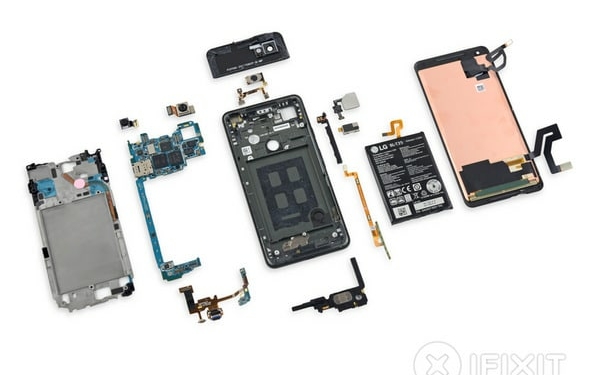source: The Verge news
The Pixel 2 comes out to market recently, and so of course iFixit has torn open the first unit it could find to let us see what’s going on inside. iFixit says there are actually two rows of strain gauges, giving the Pixel even more sensitivity and “allowing it to detect even the slightest of deflections.”
The site published its inside look at the Pixel 2 XL and while there aren’t a ton of surprises to be found (the camera module is pretty large; Google is hiding a secret chip), cracking open the phone does reveal one thing we didn’t know a ton about: how the Pixel’s Active Edge feature actually works.
Active Edge is Google’s name for the feature that lets you squeeze the Pixel 2’s sides to open up the Google Assistant. It turns out, it works using a pair of “strain gauges” on either side of the phone. The setup looks like this:
/cdn.vox-cdn.com/uploads/chorus_asset/file/9495767/XaHkQHdMbHFadlKp.jpg)
photo source: iFixit
What you’re looking at is a series of steel blocks with resistors between them, sandwiched inside a pair of flexible circuit boards, according to iFixit. Those resistors are the strain gauges. They’re sensitive to being flexed, so the Pixel can pick up changes in the electrical signal that goes through them. That means when you squeeze the outside of the Pixel, you’re ever so slightly bending the case, deforming the resistors, and giving the Pixel some data on how much they’re being bent.
iFixit says there are actually two rows of strain gauges on each sensor, giving the Pixel even more sensitivity and “allowing it to detect even the slightest of deflections.” That increased range is likely also what allows Google to offer a variety of pressure settings for when the Active Edge feature goes off. This seems to be the same setup that HTC used in the U11 for an identical feature called Edge Sense (which isn’t terribly surprising — HTC built the smaller Pixel 2).
It turns out this is pretty similar to how Apple’s Force Touch trackpads work, too. The trackpads don’t move, but they’re still able to register a click when force is applied to them. iFixit found a series of “tiny strain gauges” beneath the trackpad when it open one up two years ago, and the site had expected to find something similar inside the Pixel 2.
You can head over to iFixit to check out the rest of what’s inside this year’s bigger Pixel here.
featured picture source: iFixit






























